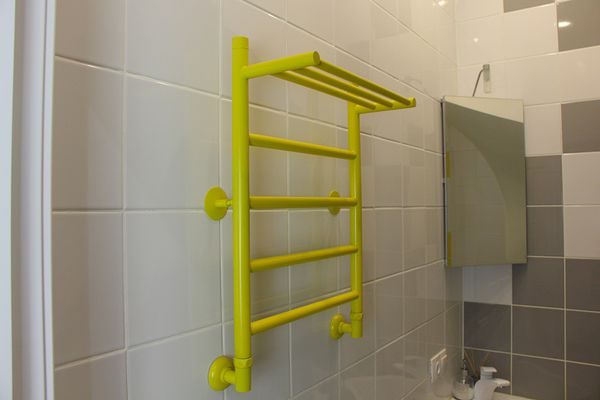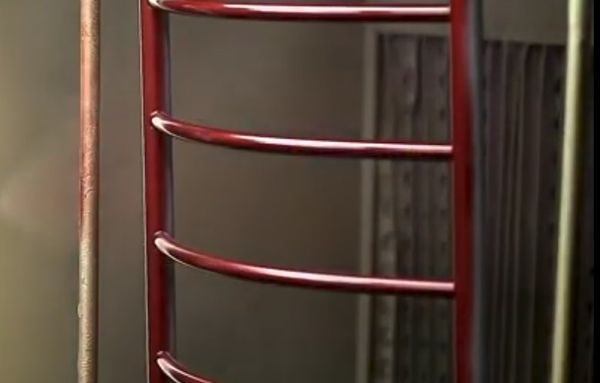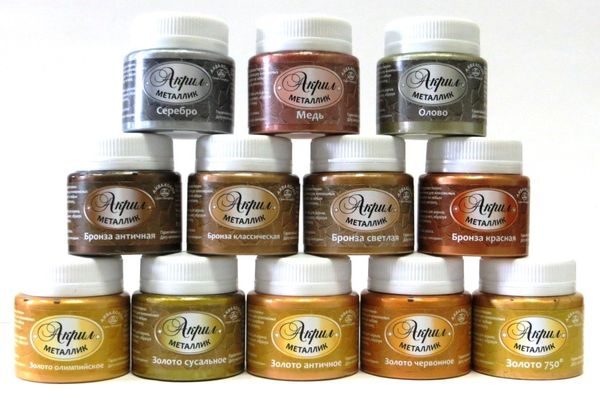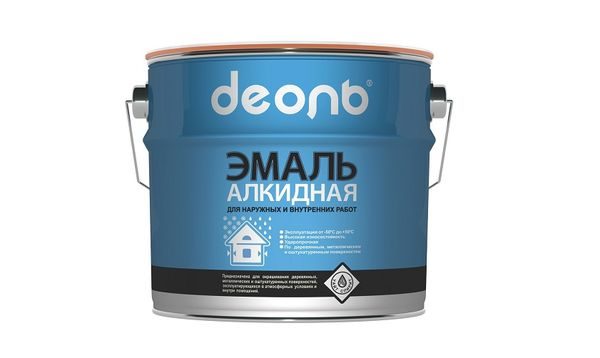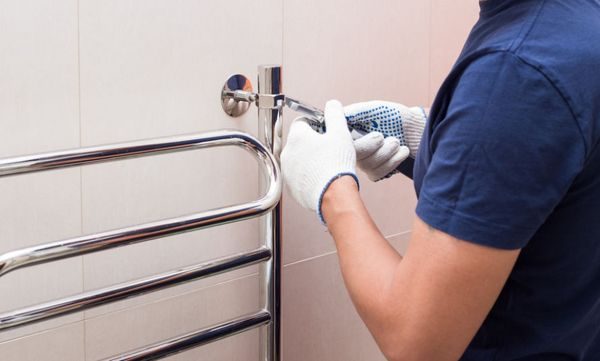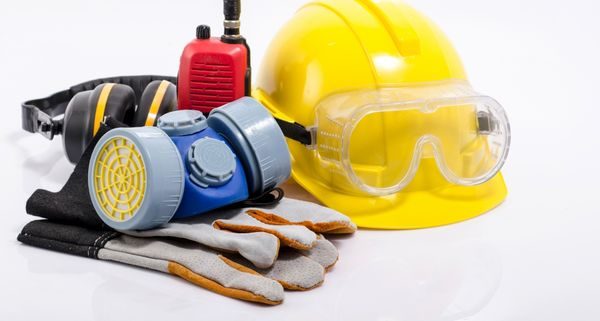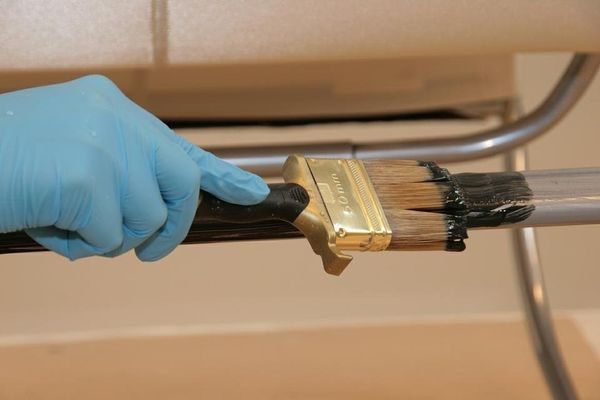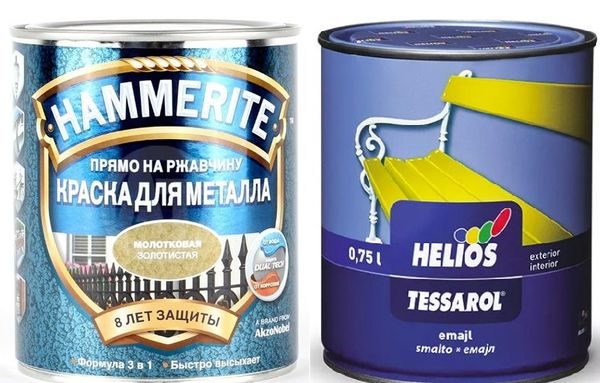When carrying out major repairs in the bathroom, all the plumbing is usually changed. Such an event is complex, expensive, so some elements can be updated with cosmetic methods. For example, there are effective ways to paint a heated towel rail in the bathroom. With the right approach, the product will regain its attractive appearance and will last for many years.
- Beginning of work
- Paint selection
- Oil paints
- Acrylic paints
- Silicone coatings
- Alkyd Enamels
- Materials and tools for work
- Preparatory work
- Mopping base
- Heated towel primer
- Dyeing
- Painting of metal, galvanized and polymer pipes - features
- How to work with a chrome heated towel rail?
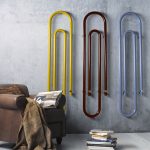
Beginning of work
Modern materials that make towel dryers (coils) are of high strength, reliable, and do not lose their external gloss throughout their entire life. But the old plumbing, especially the one that is already covered with several layers of paint, has long lost its beauty and former functionality. It is it that has to be restored by first cleaning the rough coating to metal. If you prepare poorly, a new coat of paint will quickly lag behind.
It is important to know where to start working with a heated towel rail. The first step is to prepare a set of screwdrivers to remove the device from the wall. First you need to turn off the water, allow the coil to cool completely, because it is under heating. When applied directly to hot metal, it dries instantly and the finished coating will be unstable. In addition, the evaporation of solvents from the paint will begin to proceed more intensively, which means that harm to health will increase.
It is best to plan the work of painting a heated towel rail during the seasonal shutdown of hot water. This will help prevent flooding of neighbors even in situations where the coil does not have a separate shutoff valve. Thus, all actions for coloring the device are carried out after dismantling the heated towel rail and cooling it to room temperature.
to contents ↑
Paint selection
The selection of a quality composition is very important, because it is this material that will determine the aesthetics of the result, the service life of the coating. Conventional paints and varnishes will not work: the heated towel rail is regularly heated, and they instantly crack. When buying, you need to pay attention to heat resistance: paint for a heated towel rail must withstand heating up to + 120 ... + 180 degrees.
Also, a high-quality material for coloring the coil should have the following properties:
- resistance to water, the possibility of use in wet rooms;
- resistance to wear, friction, mechanical stress;
- anti-corrosion properties, the absence of harmful components for the metal in the composition.
As for color, you should choose the right tone for a particular bathroom, corresponding to the theme, style. Most often, users choose paint for chrome, silver, gold, and other metallic coatings. The towel rails look original in black, dark blue, and red.
If desired, shades can be combined, and the colors mixed together. It is not recommended to buy only white coatings - even the most resistant material from temperature changes will lose color and become yellowish.
to contents ↑Oil paints
Such products are not suitable for working with hot surfaces. They quickly lag behind the base, have insufficient adhesion, are not heat-resistant, moreover, they smell unpleasant and have a short service life.
Acrylic paints
Compositions based on acrylic do not emit harmful fumes, do not smell, due to the smooth texture they are easily and perfectly evenly applied, do not leave streaks, sagging. Acrylic paints dry in a short time, have a high degree of adhesion to surfaces. They also have disadvantages: poor chemical and mechanical resistance, rapid abrasion.
to contents ↑Silicone coatings
Such paints are based on rubber and other resins diluted with water or organic solvents. The material in the form of a suspension is durable, does not deteriorate from the action of high temperatures, serves for a long time (up to 15 years), wear-resistant, moisture resistant. Paints with solvents are especially reliable, but they emit a pungent odor until they dry.
Alkyd Enamels
Paints based on glyptal or pentaphthalic varnish and special pigments are considered heat-resistant (withstand up to +180 degrees), therefore they are ideal for heating pipes, batteries, radiators and heated towel rails. The finished coating does not snap off for a long time, does not darken and does not crack.
The service life of the paintwork is at least 10 years, while the film is resistant to water, household chemicals, and mechanical factors. It is better to choose matte or silky-gloss alkyd enamels of the desired color: they look most beautiful. These paints have only one drawback: they contain solvents, therefore they emit an unpleasant odor within a few days.
to contents ↑Materials and tools for work
After buying the paint and dismantling the heated towel rail, you need to prepare the devices and materials:
- brushes with natural pile;
- sandpaper with different grains;
- a metal brush;
- primer for metal;
- gloves and other personal protective equipment;
- detergent;
- water
- putty knife;
- a rag;
- degreaser;
- anticorrosive composition.
Preparatory work
The effectiveness of the whole work will depend on the quality of the preparation: if the product is not given perfect smoothness, the paint will not be able to stay on its surface.
to contents ↑Mopping base
The old coating must be removed completely so that no paint or varnish remains. This can be done with sandpaper, a metal brush, but if there is a grinder, a grinding machine, then the work will go much faster. Professionals often use sandblasting machines to clean metal from paint. Also, a chemical wash or hot air gun is suitable for this purpose.
Before carrying out preparatory work wear gloves, glasses, a respirator. They organize good ventilation of the room or clean the heated towel rail in the open air.
Act in this way:
- They clean off the most poorly fixed pieces of paint, removing them with layers.
- Work out sandpaper cracks, corners, bends.
- Particularly carefully remove corrosion elements, if any.
- They wash the heated towel rail with water and detergent, removing all the smallest particles of paint, dirt and evaluating the result.
- Once again, the metal is stripped if untreated zones are revealed.
- Dry the base, then wipe it with a degreaser.
- If there was rust on the metal, an anti-corrosion composition is applied to all surfaces.
Heated towel primer
Priming is the final step in preparing a heated towel rail for staining. Soil must be selected carefully, because it also must be resistant to high temperatures and well suited for metal surfaces. It is best to buy an alkyd primer and apply it in a thin, uniform layer. After drying, repeat the process again.
to contents ↑
Dyeing
Difficulties with painting usually do not arise, all work is done with a brush:
- Thoroughly mix the paint until a homogeneous consistency.
- Gently dip the tip of a narrow brush into the paint, apply to the upper sections of the heated towel rail - this will help to avoid drops, drips.
- The product is completely stained, the material is allowed to dry (usually 2-3 hours).
- Repeat painting another 1-2 times.
- After 4–5 days, the coil is put into operation.
Instead of a brush, you can use a small spray bottle. It will allow you to apply the product without streaks, a strictly uniform layer, while there is no risk of hairs on the surface of the product.
to contents ↑The spray paint should be more liquid than using a brush, so a little solvent should be added to it.
Painting of metal, galvanized and polymer pipes - features
The main thing when painting a metal heated towel rail and pipes is high-quality cleaning of the surface not only from old paint, but also from rust. It is impossible to ignore anticorrosion treatment: a new center of rust will quickly begin to form under the paint under the paint, and paintwork will begin to snap off.
Galvanized pipes usually do not require painting, because they have a strong protective layer on the surface. But if necessary, stylize the heated towel rail can also be treated with an alkyd or silicone composition of the desired color. Before applying it, the base must be primed: without this, the adhesion quality will greatly decrease. Before staining, check that there is no condensation on the subject.
Polymeric products are also painted only for the purpose of making changes to the interior of the room, while the work does not require anti-corrosion measures, but priming is mandatory. For plastic, paints without acetone and other aggressive solvents are used.
to contents ↑How to work with a chrome heated towel rail?
If a modern heated towel rail does not fit into the interior of the bathroom, its appearance can also be changed. Not every paintwork is suitable for chrome: most of them either slip off or quickly wipe off the surface of the product. It is necessary to make skinning or sandblasting by removing the chrome coating to bare metal. After that you can primer and paint the coil in the usual way.
If there is no desire to conduct such a serious preparation, you can buy high-quality paint Brands Tessarol, Hammerite and apply it directly to chrome, however, the price of the work will be quite high. Before staining, you do not need to skin, priming - you can simply degrease the product with any solvent.
Painting a heated towel rail is not too difficult and tedious, it can be done independently. The new product will last a long time when choosing high-quality paint, so you do not need to save on material.

